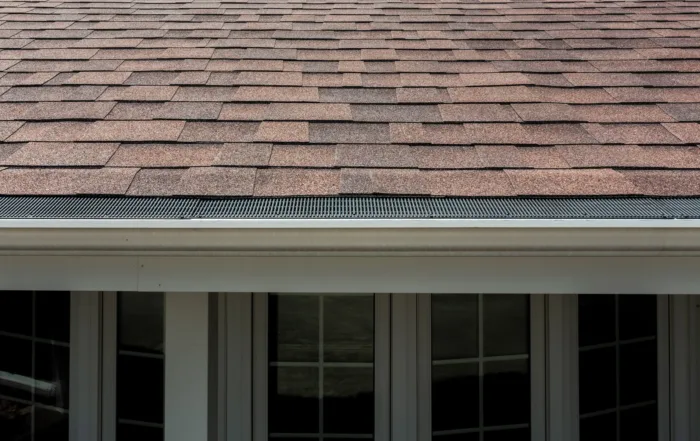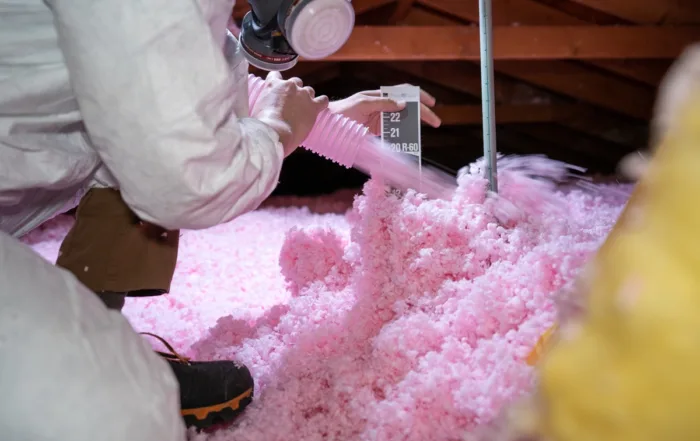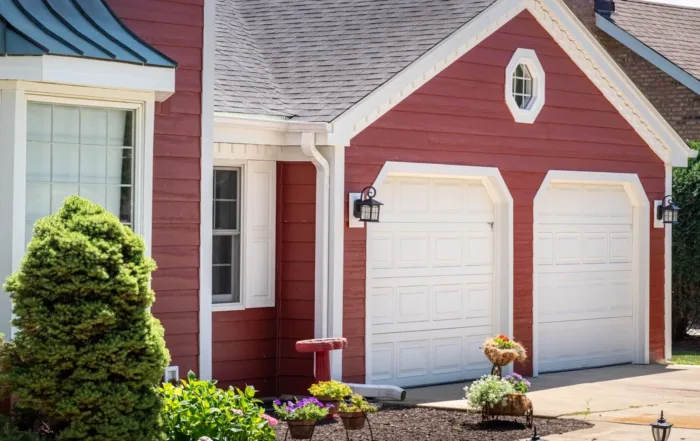What is an “Ice Dam”?
Ice dams are thick ridges of solid ice that form on the eaves of your home when snowmelt from the top of your roof runs down and refreezes on the lower edges of your roof (which are called ‘eaves’). But what’s the problem with a bit of ice on your roof? Isn’t that what a roof is for, to keep water and ice from seeping through?
What Makes Ice Dams So Damaging?
Water expands when it freezes, which creates a tremendous amount of force in between cracks and crevices. In nature, ice can even break apart rocks. Shingles are not designed to withstand freezing cycles nor are they meant to be saturated with a buildup of water for an extended period of time. Combining these factors, ice dams can wreak havoc and cause significant damage to your home if they form too often or hang around too long (excuse the pun).
Ice dams can make your shingles come loose and damage gutters from the weight of the ice, which can cause water to leak into your home. Standing water trapped behind an ice dam can have a ripple effect of consequences that turn a headache into a nightmare (picture your ceiling cave in, just after remodeling your kitchen – we’ve seen it).
How To Spot An Ice Dam
To check your home for ice dams, look for icicles hanging from the edges of your roof. The conditions that allow for icicles to develop are the same ones that can enable ice dams to build up. When you’ve experienced heavy snow and ice, a situation we Chicagoans are fairly used to, ice dams are something to watch for.
How Do Ice Dams Form?
Surprising to most homeowners, the formation of ice dams actually starts inside your home’s attic. As the heat in the house escapes into the attic, warm attic air melts the snow on the roof. Snowmelt runs down into the gutters and ice begins to build up. If this process continues over a period of time, an ice dam forms and gets bigger and bigger. Heavy ice dams can actually cause gutters to break loose from the house.
It is also worth noting that snow melts unevenly. South and west exposures will have the most trouble with ice damming, although north and east exposures are not immune to trouble.
How can I make sure ice dams never, ever form?
Bill Lang says, “We don’t want to have to be the ones to tell you this, but, you can’t. And any roofing company worth their salt knows this. But we know that proper attic insulation, ventilation and skillful craftsmanship will give both you and your home the best fighting chance to never have to deal with ice dams again.”
Preventing Ice Dams: Attic Insulation & Ventilation
The best medicine is prevention, right? The chance of ice dams forming is significantly reduced in a home with a well-insulated and well-ventilated attic space. Here’s why.
Your home needs 15 to 20 inches of blown-in fiberglass insulation. This is where you should start if you aren’t sure that your attic has been properly insulated. Proper insulation and ventilation keep your attic cold in the winter and warm in the summer (though not too warm). Blown-in fiberglass will keep the heated (or cooled) air contained in your home, while the air in your attic circulates and remains relatively similar to the outside air temperature.
Proper ventilation includes under-eave soffit vents, roof vents, or power attic fans with thermostat/humidistat controls. This same preventive combination inhibits mold growth in homes as ventilation keeps your attic dry. An attic space that is both cool and dry offers homeowners a winning strategy for preventing the ice dam headache.
Ice Dam Removal, Chicago-Style
Removing snow from the roof and knocking down icicles can help reduce the likelihood that an ice dam will form. To clear out these dams on your roof, you’ll want to start by hiring a trusted professional. Ridding the roof and gutters of the snow and ice is a difficult process. Roofing work is dangerous enough, but throw in freezing temperatures and a slick surface and it becomes a recipe for disaster.
Depending on your roof and situation, your roofing specialist may recommend breaking the ice dams so water can drain from behind the built-up ice. Removing snow and ice may cause large chunks of ice to crash from your roof. Melting ice may stream downward. These scenarios require extreme caution.
The Bottom Line: Is Your Home Protected?
We’ll just come right out and say it: very few roofs are capable of completely preventing ice dams from ever forming. Sometimes our inclement weather wins. We saw this happen first-hand all across Chicago in early 2021.
The best defense against ice dams is a good roofing company (contact us for an estimate) to ensure that your roof is built to perform during our long, cold Chicago winters. We recommend the installation of high quality roofing products, such as synthetic underlayment and Ice & Water Shield. This is just one example of how we offer our expertise to homeowners, treating each and every project that we take on as if it were our own home.
When purchasing a new roof, you get what you pay for. A key component of any roof is Ice & Water Shield. Though shingles repel water, they are not impervious to absorbing water that can build up behind an ice dam. Ice & Water Shield (I&W Shield) protects areas prone to ice dams from leaking. Because of this, we always recommend more Ice & Water Shield than local code requirements to ensure your roof lasts for its intended lifetime. Offering the best protection of your home is our priority. More eaves and valleys means more protective material is necessary. We put two courses of I&W Shield on most roofs, meaning six feet of width on eaves and valleys instead of only three feet, exceeding code requirements. I&W Shield is a key component for roof protection in climates where ice dams form and large icicles are prone to accumulate.
The best way to prevent ice dams is insulation and ventilation.
Prepare well for our harsh winters. Ensure that your roof is protected. It all starts with high quality roofing materials, proper ventilation and insulation, and excellent workmanship.




